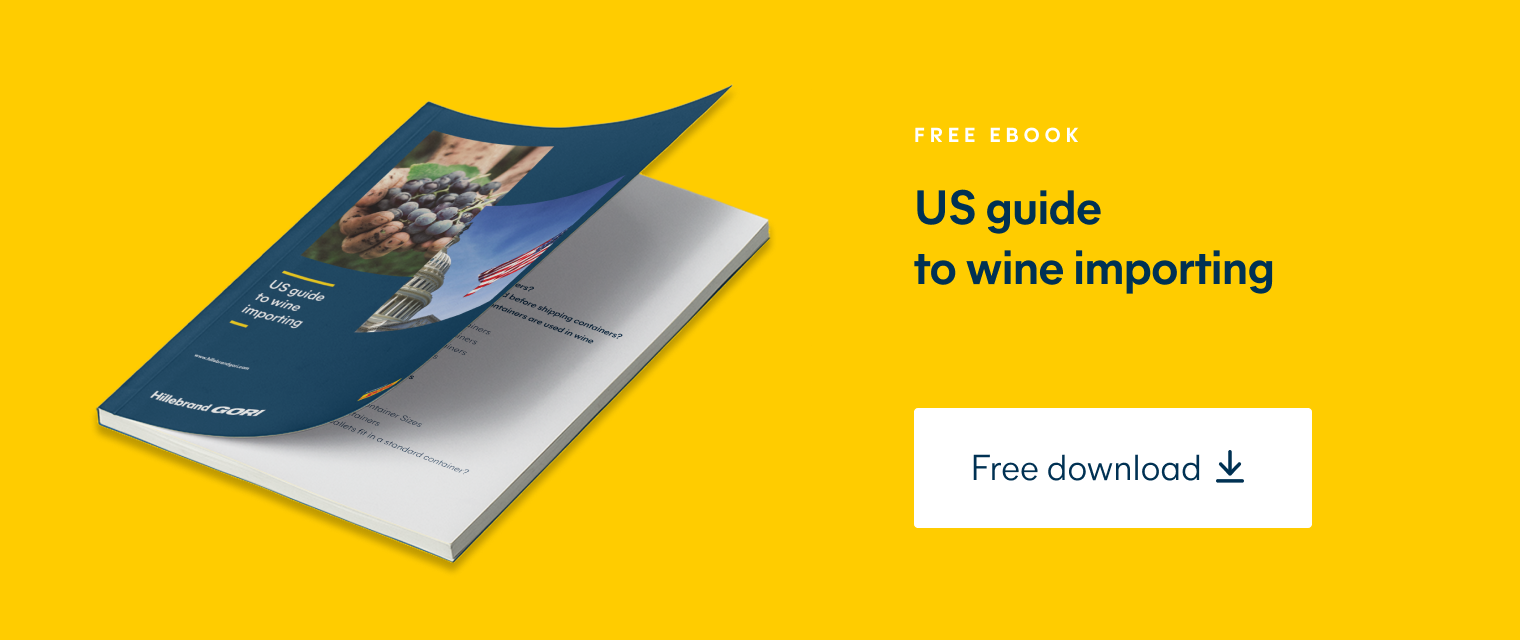What shipping documents do you need for your business?
Filling out shipping documents is an essential part of transporting wine, beer, or spirits internationally. Providing the correct documents helps ensure your beverage reaches their destination on time and within budget. But when shipping internationally, it can be difficult to know exactly what documents you need to provide, and what they mean for your shipment. To help get you started, there are a few documents that you will encounter regularly when shipping that you should be aware of.
Shipping documents every importer and exporter should know
Importing and exporting products means navigating different rules and regulations for each country, which dictate what shipping documents you will need. So, while the specific documents you will need depends on your route and products being transported, there are some shipping documents that you are likely to encounter on most import or export journeys.
Bill of Lading
Probably the most important document to be aware of is a bill of lading. A bill of lading is a shipping document that sets out the shipping destination, type and quantity of goods. It is a ‘contract of carriage’ issued by the carrier and serves as a receipt for the shipment.
There are different kinds of bills of lading, including ‘express’, ‘original’, ‘master’ and ‘house’ bills of lading. Read our in-depth guide to a bill of lading for more information.
Freight Bill
A freight bill is a shipping document that describes the services the carrier provides and the charges for those services. Unlike a bill of lading, it can't serve as evidence or proof of shipment in cases of disputes and damages.
Sea, Air or Rail Waybill
Depending on your mode of transport, you will receive a Sea, Air or Rail Waybill. These shipping documents are issued by the carrier and are contracts of carriage. They also contain contact information, delivery instructions and a cargo receipt for the shipper.
- Sea waybill: You use a sea waybill for cargo transported on water, and the carrier issues it when the shipment doesn’t require a bill of lading or if you’re shipping the products immediately.
- Air waybill (AWB): You use an AWB for cargo transported by air. The third-party carrier is responsible for this document from when they receive the parcel until it’s delivered.
- Rail waybill: You use a railway waybill for cargo transported by train, and the railway company or shipping agent prepares it based on the shipper’s instructions.
Commercial invoice
A commercial invoice is an important shipping document that contains information about the import or export. It is used to create the customs declaration. Customs authorities use this document to decide what duties or taxes apply, and if the shipment can enter or leave the country. You will need to complete a commercial invoice for every consignment.
Arrival Notice
Also known as a cargo arrival notice, this document states that the shipment has arrived, or is scheduled to arrive at a certain location. Typically sent by the carrier 3-5 days prior to arrival, the arrival notice lets relevant parties in the supply chain know when they need to carry out their part of the shipping process.
Customs Document
An official customs document that lists and details the cargo that is being exported or imported. It is lodged with the customs office by the owner of the shipment, which is usually the shipper.
Customs Bond
This is a type of insurance that guarantees the payment of duties and taxes to the customs authorities on behalf of the importer. All commercial shipments entering or leaving a country must have a customs bond. You can obtain it from a licensed surety company or through a freight forwarder.
Dangerous Goods Declaration (DGD)
A DGD is a document required by international regulations that provides information about hazardous materials transported during shipping. It includes the type of products, quantity and the potential risks associated with them. This document is essential for the safe transportation of dangerous products.
Packing List
A packing list is a shipping document required when exporting goods. It is sometimes also called a shipping list, packing slip, packing note and manifest, amongst other names.
It contains an itemized list of shipping shipped items with information on the product, exporter, the shipper, and buyer. The list includes dimensions, safety measures and weight. The packing list also details the shipping method, type, origin, destination and date of departure. It is used by each party in the supply chain who handles the shipment on its journey. This ensures that each party is aware of how the shipment should be handled. This is important for sensitive goods, such as those that need to be kept cool or handled more carefully.
Packing Declaration
A packing declaration is a shipping document that provides details regarding the packaging of goods. It includes information on the packaging materials used, such as boxes, crates or containers, and their corresponding weights and dimensions.
Letter of Credit
A letter of credit (LC) is a financial instrument used in international trade transactions to guarantee payment to the seller. In shipping, a letter of credit is commonly used to ensure that the seller will be paid for the goods they have shipped before the buyer takes possession of them.
Certificate of Free Sale
A certificate of free sale is a document issued by the government or authorized organization that confirms that the exported products are freely sold in the country of origin and comply with all relevant laws and regulations. Certain products may require this to prove their safety and quality.
Certificate of Origin
A certificate of origin is an international shipping document that states the country where the goods have come from. It certifies that the products were produced, manufactured, or processed in a specified country. For countries with trade agreements, the certificate of origin also lets customs officials know that the products may be subject to lower taxes and duties.
Inspection certificate
An inspection certificate is a document that certifies the inspection of products and that they meet specific quality standards. You can use it to assure buyers that the products they're buying meet their specifications and help customs officials determine if the goods comply with safety regulations.
Insurance certification
Insurance is a crucial aspect of international shipping. It provides protection against potential losses that may occur during the shipment process. An insurance certificate serves as proof of insurance for a shipment and includes details such as the type of coverage, insured value and underwriter information.
Export/ Import Business License
Depending on the goods, origin and destination of your shipment, you may also need an export or import licence. For example, wine imports to the EU will need to be accompanied by a VI-1 document. This shipping document also applies to any shipments to the UK that will be re-exported to the EU. It certifies that the wine complies with EU regulations, unless it’s exempt. Each country or trade region may have its own requirements for export business licences, so you should check the relevant country’s customs authorities’ website.
Import wine license
Some countries may also require shippers to have an import wine license. This ensures the importer wine complies with the country's specific regulations and standards for the trade and sale of alcohol. Failure to obtain a license could result in delays or even the confiscation of shipments at the port. For example, the United States requires an import permit for all alcoholic beverages imported into the country. Research and obtain necessary import licenses before shipping wine internationally to avoid potential issues.
Importer Security Filing (ISF)
The ISF is a mandatory document the US Customs and Border Protection (CBP) requires for all ocean shipments entering the United States. The importer must complete this filing at least 24 hours before the vessel's departure from its port of origin.
Proof of Delivery (POD)
The POD document provides evidence that the products arrived at their destination. It typically includes information such as the date and time of delivery, the recipient's name and signature, and any damage or discrepancies noted upon receipt.
Shipper Tax ID Number
A shipper tax ID number is a unique identification number assigned to businesses and individuals by their respective governments. Carriers may require it to export goods from your country.
Being aware of these shipping documents is a good foundation to build on, but you will also need to know about any special documents required for your route and product.
What documents are used in shipping? Country-specific examples
Each country requires different shipping documents for wine and alcoholic beverage shipments. Understanding the documentation requirements for your trade route will make your product’s journey to market much smoother.
Import and export shipping documents for Australia
As the 5th largest wine exporter, Australian wine is exported to over 100 destinations around the world. Taking Australia as an example, here are the shipping documents you would need as a wine importer or exporter.
Shipping documents for Australian imports:
- Ocean Bill of Lading
- House Bill of Lading
- Commercial Invoice
- Packing List
- Packing Declaration
- Country of Origin Certificate – particularly for countries that Australia has a Free Trade agreement with.
Other documents required for certain products: - Age Certificate for some Spirits
- Manufacturer's Declaration for Foodstuffs, along with an Ingredients List.
- Customs Declaration – lodged for Clearance once all the above has been provided
- Quarantine Direction – must be lodged for some products for Quarantine Clearance
Shipping documents for Australian exports:
- Ocean Bill of Lading
- House Bill of Lading
- Commercial Invoice
- Packing List
- Wine Permit Approval from the Australian Wine Corporation
- Export Declaration lodged prior to cargo acceptance at the wharf
Import and export shipping documents for China
China is another growing market for wine exports, but with different import and export rules:
Shipping documents a supplier who intends to export wine to China must provide:
- Contract
- Commercial Invoice
- Packing list
- Certificate of origin (for distilled spirits and malt beverages)
- Certificate of bottling date
- Sanitation and Health certificate
- Analysis report
- Wine label
- Registration as overseas manufacturer on GACC, CFRA number ( GACC decree, applies from 1 January 2022)
Shipping documents that an importer in China must provide:
- Business licence
- Registration as food importer
- Authorization letter for customs declaration
- Element for customs declaration
- Translation on wine label and Chinese label
Trade relationships between countries will also impact what shipping documents you will need and how you can obtain them. For example, the China-Australia Free Trade Agreement means that authorised bodies, such as Wine Australia, can issue Certificates of Origin for Australian exporters.
We can help make your shipping documents simple
Your carrier or freight forwarder can do more than simply transport your wine, beer or spirits. As your shipping partner, Hillebrand Gori can provide tailored shipping services. This can include assisting you with declaring your exports to customs, understanding duties, taxes and tariffs, obtaining an organic wine licence, and completing your commercial invoice, certificate of origin, phytosanitary and other licences. Our expertise in alcoholic beverage shipping means we can explain exactly what shipping documents you need.
For more, check our glossary for information on other shipping documents, such as an Importer Security Filing and a Shipping Order. And if you need a quote for comprehensive freight forwarding, you can request a quote here.
Shipping documents are important paperwork required when shipping goods, including wine, beer or spirits. These documents provide crucial information for customs clearance and ensure your shipment arrives on time and safely.
When shipping products, you'll need to provide information like the product type, quantity, value, destination and ship date. This information helps customs determine the necessary duties, taxes and tariffs and ensures your shipment complies with all regulations.
Shipping documents are typically completed by you or a freight forwarder (like Hillebrand Gori). While it is possible to handle shipping documents yourself, using a freight forwarder can simplify the process and prevent errors. A freight forwarder has expertise in dealing with customs and regulations and can manage all necessary paperwork for your shipment. They can also provide valuable guidance on the most efficient and cost-effective shipping methods.
Yes, you can submit many shipping documents electronically — known as a Paperless Trade (PLT) service. This allows for a more streamlined and efficient process, reducing the possibility of errors and speeding up customs clearance.
How can we help your business grow?





